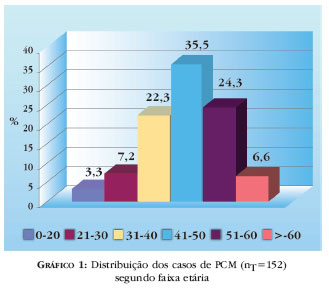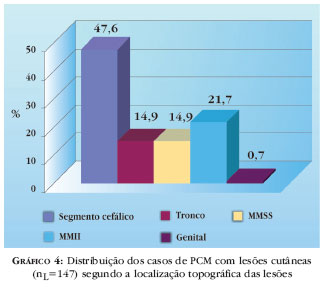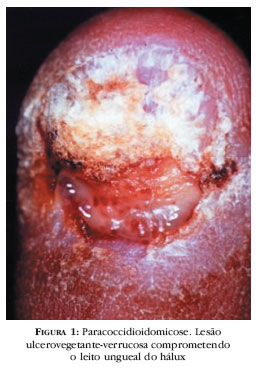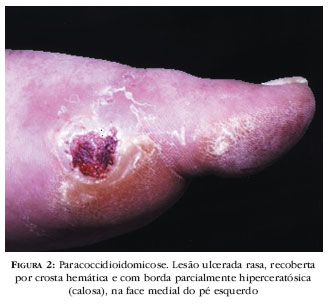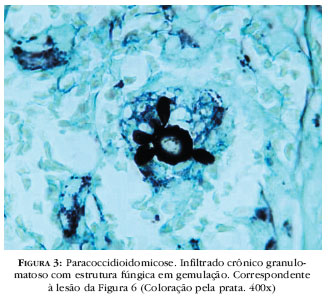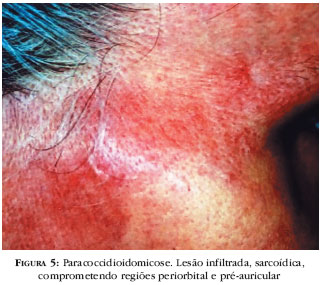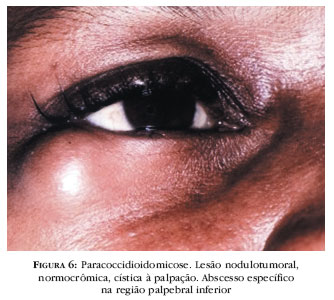BACKGROUND: Paracoccidioidomycosis is a highly prevalent systemic mycosis in Brazil. The oral and cutaneous lesions are useful for diagnostic proposals and clinical follow-up. OBJECTIVE: To quantify and qualify skin lesions associated to active paracoccidioidomycosis and to correlate them with the clinical form and severity of cases. METHODS: An observational clinical study of cases was performed. Patients were classified according to the clinical form, topographic distribution and morphology of skin lesions. RESULTS: A total of 152 patients classified as chronic form (adult type) (87.5%) or acute-subacute form (juvenile type) (12.5%) were studied. Skin lesion was diagnosed in 61.2% of patients. There was no statistical correlation between presence of skin lesion and clinical form (p=1.000), nor between skin lesion and severity of disease (p=0.5607). There was statistical correlation between mucosal lesion and adult patients (p <0.001). The lesions were on the cephalic segment (47.6%), trunk (14.9%), upper limbs (14.9%), lower limbs (21.7%) and genital region (0.7%). The ulcerated lesions (42.8%) and infiltrative (26.6%) lesions prevailed. CONCLUSION: The frequency of skin lesions and their morphology are useful for diagnosis of paracoccidioidomycosis. Oral lesions in the acute-subacute form (juvenile type) are not common.
Epidemiology; Mucous membrane; Mycosis; Paracoccidioidomycosis; Skin manifestations

